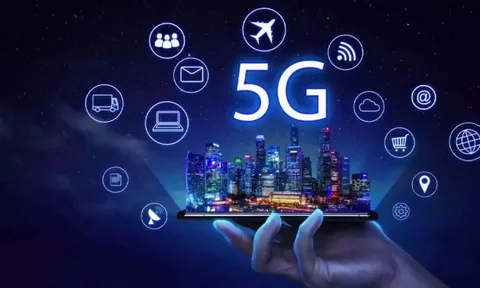5G Technology: Transforming Connectivity and Communication
The arrival of 5G technology marks a significant leap forward in the realm of connectivity and communication. As the fifth generation of mobile networks, 5G promises to revolutionize how we interact with the digital world, enabling faster data speeds, lower latency, and greater device connectivity than ever before. This article explores the transformative potential of 5G technology, its key features, and its impact on various sectors.
What is 5G Technology?
5G is the latest standard in mobile telecommunications, succeeding 4G LTE technology. It is designed to provide significantly faster speeds and more reliable internet connections, paving the way for new applications and technologies. While 4G networks offer speeds up to 1 Gbps (gigabit per second), 5G can potentially deliver speeds of up to 10 Gbps, making it up to 100 times faster than its predecessor.
The core improvements of 5G technology are categorized into three main features:
- Enhanced Mobile Broadband (eMBB): 5G supports higher data rates and larger bandwidth, enabling seamless streaming of high-definition videos, augmented reality (AR), and virtual reality (VR) applications.
- Massive Machine-Type Communications (mMTC): This feature allows for the connection of a massive number of devices simultaneously, facilitating the growth of the Internet of Things (IoT). It enables smart cities, connected vehicles, and other innovations that require extensive connectivity.
- Ultra-Reliable Low Latency Communications (URLLC): 5G reduces latency to as low as 1 millisecond, making real-time communication feasible for applications that require immediate responses, such as remote surgery and autonomous driving.
The Transformative Impact of 5G Technology
1. Revolutionizing Communication
5G technology is set to enhance communication methods. With improved video calling, high-definition streaming, and interactive applications, individuals and businesses will experience seamless communication, fostering collaboration across distances. Virtual meetings will become more immersive, enabling users to interact as if they were in the same room, regardless of their physical locations.
2. Empowering Smart Cities
The rise of smart cities relies heavily on 5G connectivity. By enabling the connection of various devices, 5G technology will support smart infrastructure, traffic management systems, and public safety initiatives. Sensors and cameras connected through 5G can monitor traffic patterns, optimize energy usage, and enhance emergency response efforts, ultimately improving the quality of urban life.
3. Transforming Healthcare
5G has the potential to revolutionize the healthcare industry. Telemedicine, remote monitoring, and advanced medical devices will benefit from reduced latency and enhanced connectivity. Doctors can perform remote surgeries using robotic systems with real-time feedback, while patients can be monitored continuously through connected devices, improving health outcomes and reducing hospital visits.
4. Accelerating Industry 4.0
The manufacturing sector stands to gain significantly from 5G technology. Industrial automation, smart factories, and supply chain management will see improvements in efficiency and productivity. Real-time data sharing between machines, sensors, and human operators will streamline operations, reduce downtime, and enable predictive maintenance, leading to cost savings and increased competitiveness.
5. Enhancing Entertainment and Gaming
5G technology will transform the entertainment landscape by providing ultra-fast streaming and interactive experiences. Gamers can enjoy high-quality graphics and low latency in online gaming, while streaming services can deliver 4K and even 8K content without buffering. The integration of augmented reality and virtual reality will allow for immersive gaming and entertainment experiences, taking user engagement to new heights.
Challenges and Considerations
While 5G technology presents numerous advantages, several challenges need to be addressed:
- Infrastructure Requirements: Implementing 5G requires significant investment in infrastructure, including the deployment of more cell towers and small cells to provide adequate coverage.
- Security Concerns: As connectivity increases, so do cybersecurity threats. Ensuring the security of data and devices connected to 5G networks is crucial to prevent potential breaches.
- Regulatory Challenges: Governments and regulatory bodies must establish policies and regulations that facilitate the deployment of 5G while addressing privacy concerns and spectrum management.
Conclusion
5G technology is set to transform connectivity and communication, paving the way for innovative applications and industries. Its ability to deliver faster speeds, lower latency, and massive device connectivity will redefine how we interact with the world around us. As we embrace the possibilities of 5G, it is essential to address the challenges that accompany its implementation, ensuring a secure and efficient digital future. The impact of 5G will be felt across various sectors, making it a cornerstone of technological advancement in the years to come.



